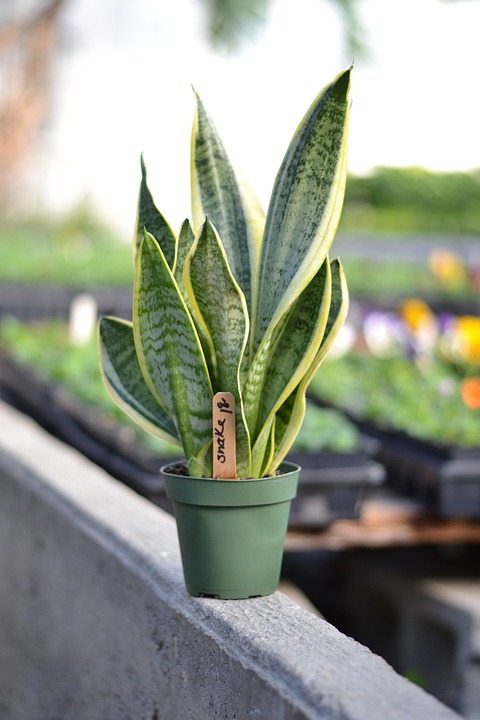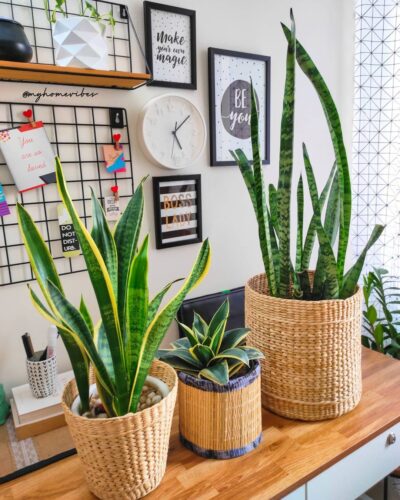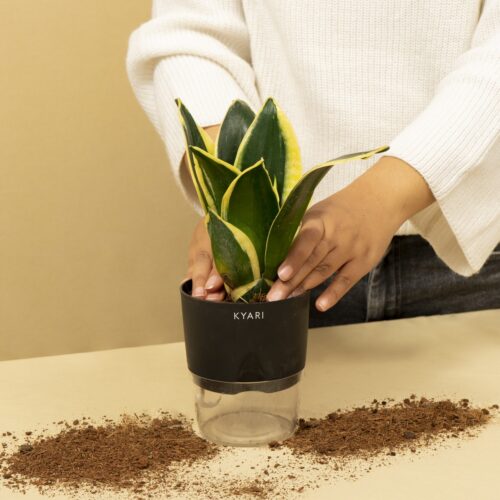Concerned about Snake Plant Drooping? Find What to do to revive it by learning about common causes and effective solutions in this guide.
Snake plants, also known as Sansevieria, are popular houseplants cherished for their hardiness and air-purifying qualities. However, if you notice your snake plant drooping, it might indicate something isn’t quite right. Don’t worry; this article will explore the common causes of Snake Plant Drooping. Find What to do! to revive this resilient indoor companion.
FIND Are Snake Plants Toxic to Dogs?
Causes of Snake Plant Drooping Leaves
1. Overwatering:
One of the most common reasons for snake plant drooping is overwatering. Snake plants are drought-tolerant, meaning they prefer to dry out between waterings. If the soil is consistently soggy, the roots can rot, leading to drooping leaves. To fix this, allow the soil to dry out before watering again. Make sure your pot has good drainage.
2. Poor Drainage:
Inadequate drainage can also cause excess moisture to accumulate in the soil, leading to root rot and drooping leaves. Ensure your snake plant is in a well-draining pot and that excess water can escape freely.
3. Insufficient Light:
Snake plants thrive in indirect, bright light. If they don’t receive enough light, their leaves may become weak and droop. Place your snake plant near a window with filtered sunlight or use artificial grow lights to provide adequate illumination.
4. Pests:
Pests like mealybugs and spider mites can infest snake plants, causing damage to their leaves and making them droop. Inspect your plant regularly for any signs of infestation and treat with appropriate measures if necessary.
5. Temperature Extremes:
Extreme temperature fluctuations can stress snake plants, causing their leaves to droop. Keep your snake plant away from drafts and avoid exposing it to temperatures below 50°F (10°C).
6. Pot Size:
If your snake plant has outgrown its pot, it may struggle to support its foliage, leading to drooping. Consider repotting it into a slightly larger container to provide more stability.
7. Fertilization:
Over-fertilizing your snake plant can lead to an excess of salts in the soil, which can damage the roots and cause drooping. Use a balanced, diluted fertilizer and follow recommended feeding guidelines.
8. Root Bound:
Snake plants are known to tolerate being root-bound to some extent, but if they become severely root-bound, their growth can be stunted, and leaves may droop. Repotting into a larger container can alleviate this issue.
LEARN Growing Snake Plants in Water
Factors that Cause Snake Plant Drooping
1. Inadequate Light:
Low Light: Snake plants are known for their tolerance to low light conditions, but if they don’t receive enough light, they can become weak and droop. Inadequate light affects their ability to photosynthesize and produce energy. To remedy this, place your snake plant in a spot with indirect, bright light. Avoid direct sunlight, which can scorch the leaves.
2. Temperature Fluctuations:
Cold Drafts: Snake plants are sensitive to extreme temperature fluctuations, especially cold drafts. Drafts from windows or doors during winter can stress the plant and cause its leaves to droop. Keep your snake plant away from such drafts and maintain a stable temperature range within the recommended 70°F to 90°F (21°C to 32°C).
3. Humidity Levels:
Low Humidity: Snake plants are adaptable to various humidity levels, but they can suffer in extremely dry environments. Low humidity can lead to drooping leaves and slower growth. To address this, consider raising the humidity around the plant by misting it occasionally or placing a tray of water near it. Grouping plants together can also increase local humidity.
4. Overcrowding:
Overcrowded Roots: If your snake plant has been growing in the same pot for a long time without repotting, the roots may become overcrowded. This restricts their ability to take up water and nutrients, resulting in drooping leaves. Repotting into a slightly larger container with fresh, well-draining soil can alleviate this issue.
5. Pot Size and Drainage:
Improper Pot Size: Using a pot that’s too large for your snake plant can cause problems with water retention, leading to root rot and drooping leaves. Conversely, a pot that’s too small may not provide enough support for the plant. Choose an appropriately sized pot with drainage holes to maintain soil moisture balance.
6. Water Quality:
Poor Water Quality: The quality of the water you use can impact your snake plant’s health. Water with a high salt or mineral content can cause leaf drooping over time due to salt buildup in the soil. Consider using distilled or purified water to prevent this issue.
7. Soil Composition:
Compact or Poorly Draining Soil: Snake plants thrive in well-draining soil. If your plant is in compacted or poorly draining soil, it can lead to waterlogged roots and drooping leaves. Ensure your plant is potted in a well-draining mix for succulents or cacti.
8. Neglect and Dust Accumulation:
Lack of Maintenance: Neglecting your snake plant, such as not cleaning its leaves or removing dust, can hinder its ability to absorb light and lead to drooping. Wipe the leaves gently with a damp cloth periodically to remove dust and enhance their appearance and health.
CHECK Best Snake Plant Soil Recipes
What to Do to Revive Your Drooping Snake Plant
1. Diagnose the Problem:
Before you can effectively revive your drooping snake plant, you need to identify the root cause of the issue. Look closely at the plant and its environment to pinpoint what might be causing the drooping leaves. Is the soil too wet, or is it too dry? Is the plant getting enough light? Are there signs of pests or disease? Understanding the problem is the first step to finding the right solution.
2. Adjust Watering Habits:
Overwatering is a common reason for snake plant drooping. To remedy this, let the soil dry out completely between waterings. Stick your finger into the soil about an inch deep; if it feels dry, it’s time to water. Ensure the pot has drainage holes, allowing excess water to escape. If the plant is in a decorative pot without drainage, consider removing it for proper watering.
3. Prune Damaged Leaves:
If your snake plant has severely drooping or damaged leaves, don’t hesitate to trim them with clean, sharp scissors or pruning shears. This not only improves the plant’s appearance but also encourages new growth. Cut the leaves close to the soil level, removing any brown or mushy portions.
4. Check for Proper Drainage:
Ensure that your snake plant is in a pot with adequate drainage holes. If it’s not, consider repotting it into a container that allows excess water to escape. Well-draining soil is also essential to prevent root rot.
5. Light Requirements:
Snake plants thrive in indirect, bright light. If your plant isn’t receiving enough light, the leaves may become weak and droop. Move it to a spot with better lighting conditions, such as near a window with filtered sunlight. If natural light is limited, you can supplement it with artificial grow lights.
6. Pest Inspection:
Inspect the plant, especially the undersides of leaves, for signs of pests like mealybugs or spider mites. If you spot any, treat the infestation promptly using insecticidal soap or neem oil. Isolate the affected plant to prevent the pests from spreading to other indoor plants.
7. Temperature and Environment:
Maintain a stable temperature range for your snake plant, ideally between 70°F to 90°F (21°C to 32°C). Avoid exposing it to extreme cold drafts or sudden temperature fluctuations, as this can stress the plant.
8. Repot If Necessary:
If your snake plant is severely root-bound, where the roots have taken up most of the pot’s space, it may struggle to support its foliage. Repot it into a slightly larger container using well-draining soil to give the roots more room to grow.
9. Maintain Proper Fertilization:
Avoid over-fertilizing your snake plant, as excessive salts in the soil can damage the roots and cause drooping. Use a balanced, diluted fertilizer and follow the recommended feeding schedule on the product label. Typically, snake plants don’t require frequent fertilization; once or twice a year during the growing season is usually sufficient.
10. Patience and Consistency:
Reviving a drooping snake plant may take time. Be patient and consistent with your care routine. Regularly monitor the plant’s progress and make adjustments as needed. With the right care, your snake plant should start to perk up and display healthy, upright leaves over time.
Learn How to Force a Snake Plant to Bloom






